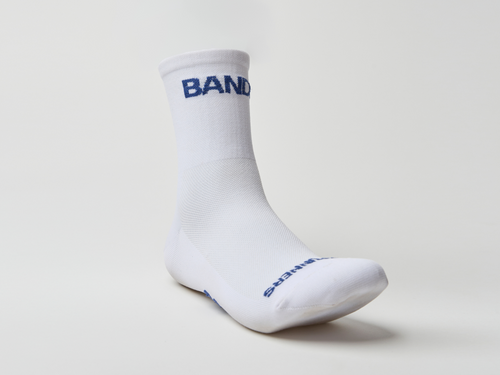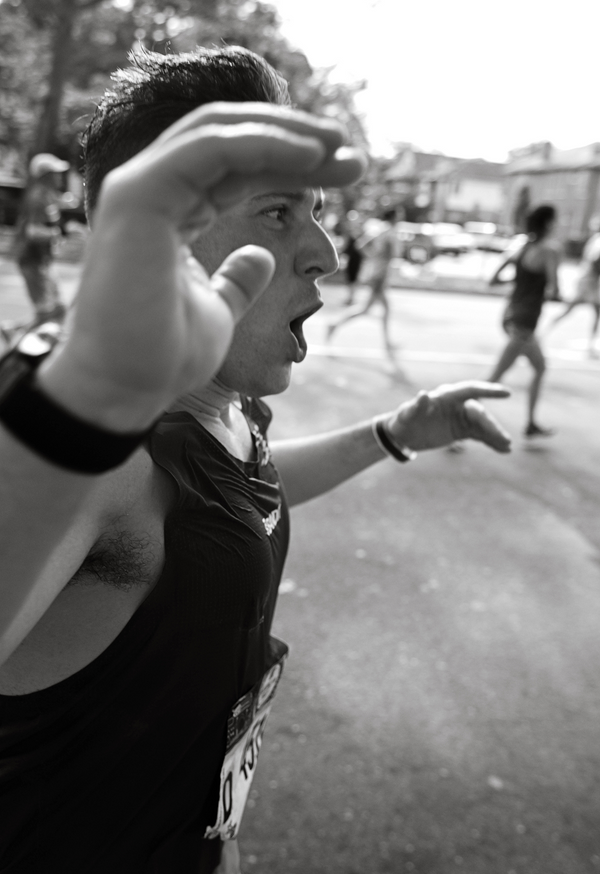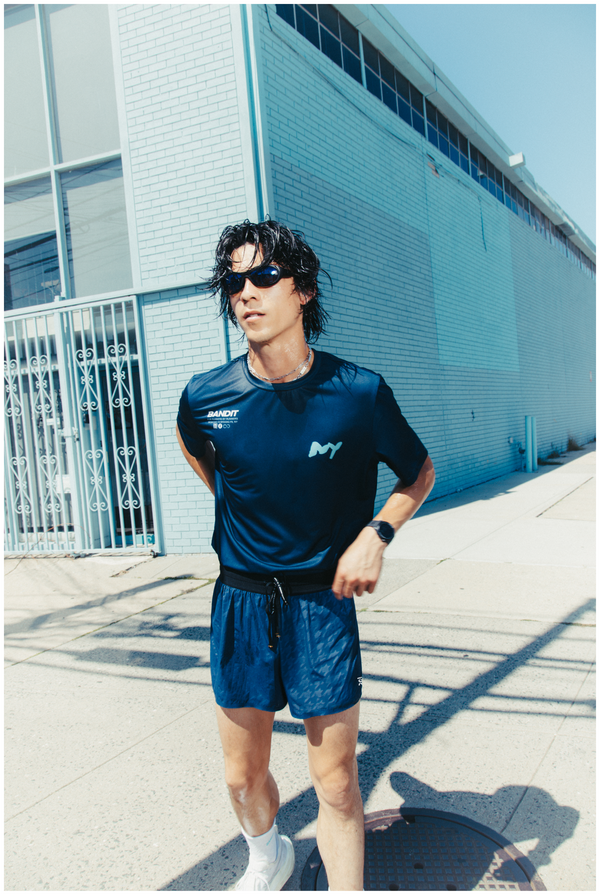Mona Laviñia Garcia
sat in bumper-to-bumper traffic, idly staring at the rain streaming down her windshield. It was spring 2012 and Garcia spent endless hours in transit for her job as a project coordinator at a construction company. She craved fresh air, some dynamism.
A flash of movement broke her rumination. A woman was running past the queue of cars, seemingly unbothered by the rain and—call it speculation but—unencumbered by the doldrums of everyday life.
Garcia gripped the steering wheel and thought, I want that feeling—to be free, unstuck. She’d never run before, but figured now’s as good as any time to put one foot in front of the other.
Ready (or not), set, go
First, Garcia needed shoes. She bought a pair of Nikes, laced up, and set out on her first quest: to run a half-mile around her block in Silver Spring, Maryland, on the outskirts of Washington, D.C.
Her body balked at the burning sensation that constricted her lungs and crept into her legs, turning them leaden. Garcia alternated between running and walking, thinking, Is this for me?
Her extracurricular activities usually involved bellying up to a bar for happy hour most days of the week. And while she wasn’t a total stranger to working out, her exercise du jour typically involved at-home workout DVDs with five-pound dumbbells.
Slowly, and with patience, Garcia extended her runs; first a street longer, then a mile more. Her pace and place in the sport began to feel less foreign.

Part of a pack
As Garcia found her footing, she tried her hand at a group run. Going in, she was nervous as hell. While skittish and feeling a bit like an imposter, she ignored the urge to run in the opposite direction and joined a local group from Nike Run Club (NRC).
Maybe it was nerves, maybe it was evidence of her conditioning, but Garcia ran farther and faster than anticipated.
Nine months into her running journey, much of it with NRC, Garcia got her first gig as a pacer for the Nike Women’s Half Marathon. She was motivated to learn more about the sport just as much as she was driven to help other women overcome their fears of getting left behind or not being accepted in the running community.
Making opportunities
It’s never easy to make a transition in life—especially when the decision is out of your control—but perspective is everything.
When Garcia was laid off from her job at the construction company, she decided to pivot her career into fitness full-time. She credits her can-do disposition to her father, a Salvadoran immigrant who fled to America in 1982 to escape civil war.
“I learned from him that I can make anything happen if I want to,” Garcia says.
So she became a boxing instructor despite having never thrown a punch, much less own a pair of gloves. Garcia spent a year one-on-one with a veteran boxing coach to perfect her uppercut and jab, as well as hone in on the intangibles. The work furthered her conditioning, but also her mental fortitude. Tenacity is hard-earned, but with it you can endure some pretty brutal endeavors.
The concentration required in boxing became a marginal gain in running, too. It’s the mindset, she says. “It plays very well when you’re struggling in a run. You’re fighting for something that’s bigger than the moment.”
By 2018, Garcia had completed four marathons and was averaging up to 50 miles a week. At year’s end, she was hired as a founding instructor at Rumble, a studio that offers boxing-inspired HIIT workouts. She also cinched a side hustle leading a lululemon-sponsored half-marathon training program. But she still yearned to grow.
How can I get better? It was a question that bobbed on the surface of her subsconscious constantly. She grabbed hold and, in June 2020, co-founded Northeast Track Club (NETC) in D.C., with her friend Iwona Kesting. While the COVID-19 pandemic spurred seismic shockwaves in all corners of the globe, it was a major boon for running. People needed an escape. Many turned to running—whether rebooting an old hobby or starting anew.

Somewhere to run
Northeast Track Club offered Garcia the chance to share with others what running had given her—clarity, confidence, and calmness. “It’s the seed to everything I do,” she says. It also provided a way to introduce and elevate the running experience for women.
“There needed to be a space for women to own their speed, their strength, their power,” she says. The Northeast Track Club offered that.
It all started with an empty track near KIPP DC College Preparatory and five friends who agreed to show up for each other on Tuesdays. Five became 11, then 20, then 80, and now 100 runners from around D.C. show up to do speed work together.
“I’m in awe,” Garcia says. The women-led track club is still captained by the founding members. They guide a diverse collective of runners—roughly 60 percent women, 40 percent men—that’s reflective of D.C., Garcia says.
She nixed the idea of memberships early on.
“I wanted to make sure people who can’t afford that have a place to get quality training,” she says. “At the end of the day, we just want to build community.”
A support system near and far is exactly what Garcia will lean on when she participates in the unsanctioned, invite-only ultramarathon known as The Speed Project (TSP). Garcia will tag-team 340 miles from Santa Monica to Las Vegas. Geography buffs know that means traversing Death Valley, the hottest place on Earth and driest in North America.

“To put my body through that…how do you react?” she says. “It’s character building.”
And just three weeks after, Garcia’s legs will take another walloping when she runs the Boston marathon for the first time (her eighth marathon).
“Pray for me!” she jokes—kinda.













